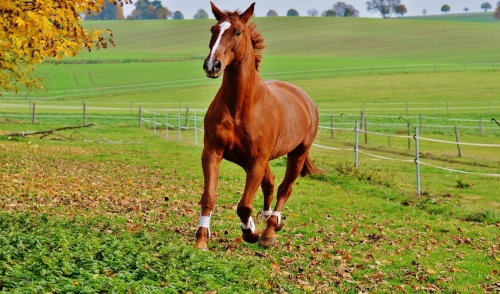
Polo wraps can be a great way to protect your horse's legs and ankles, but they must be applied correctly to be effective. Good wrapping can protect a horse from minor scrapes and bruises while working out, training or competing, and can keep arena grit and sand off the legs, but poorly applied wraps could impede circulation and disrupt gait.
Correctly Applying Polo Wraps
There are multiple techniques for wrapping a horse's legs, but consistency is essential for well-applied wraps. Before applying wraps…
- Be sure the horse is standing square and level so its posture and balance are equal. This will help keep the wraps evenly applied so no leg has too much or too little pressure.
- The horse's legs should be clean and dry before wrapping. Even a small bit of debris, when held in place by a wrap, could cause intense chafing and discomfort. Before wrapping, check for injuries, inflammation or other problems that could be accentuated by a polo wrap.
- Wraps need to be clean and thoroughly dry before use. Wet or damp wraps can chafe, and dirt or debris will cause the wraps to wear out more quickly. Worn, inflexible wraps will not stay in place.
To correctly apply polo wraps…
- Have one person wrap all four legs. Everyone's technique may vary just a little, and those variations could change the wrap's tension and be uneven on the horse's legs.
- Use the same wrap style on each leg, starting at the same relative position and wrapping in the same relative direction. This uniformity will help keep the wraps balanced.
- Position the wrap so the Velcro or closure tab will not be visible. This is especially important for competitions, when appearances may be part of judging and scoring.
- Wrap with consistent, even tension around the entire leg. Uneven tension could damage a horse's tendons or impede circulation.
- Avoid wrinkles which can create uneven tension. With each turn of the wrap, overlap the previous turn by 30-50 percent to ensure there are no gaps and to keep the wrap firmly in place.
- If desired, particularly for training or for horses unused to wraps, secure the closure with suitable tape to keep it from unwrapping.
It takes patience and practice when applying polo wraps. Not only do riders need to develop the technique that works for them and their horse, but the horse needs to get accustomed to the feel of wraps. Once properly applied, however, wraps can be useful and can help keep a horse safe and in good condition.

Comments